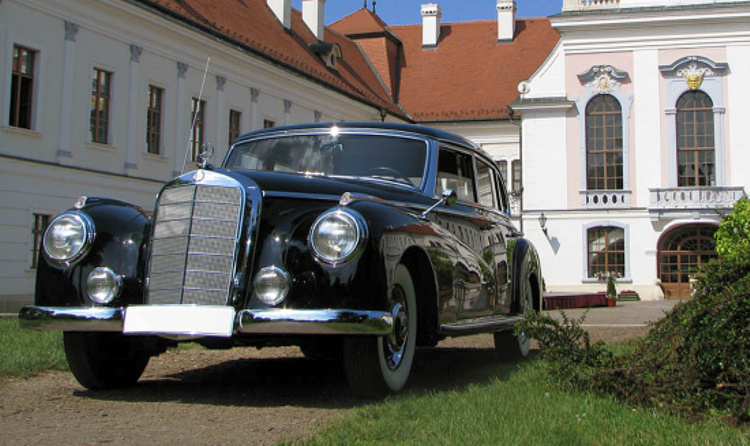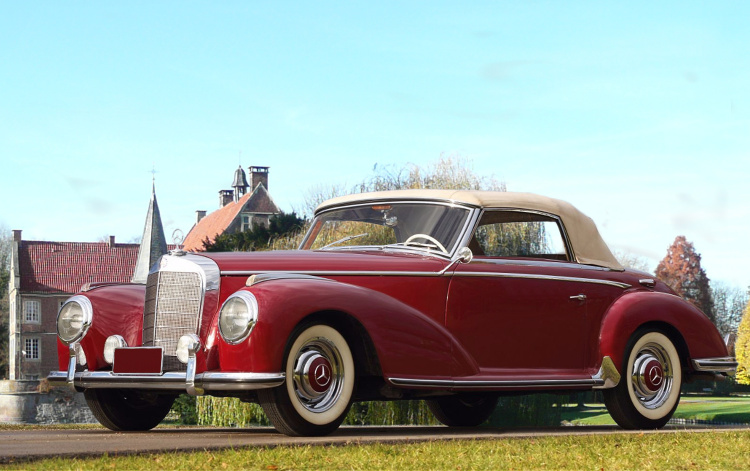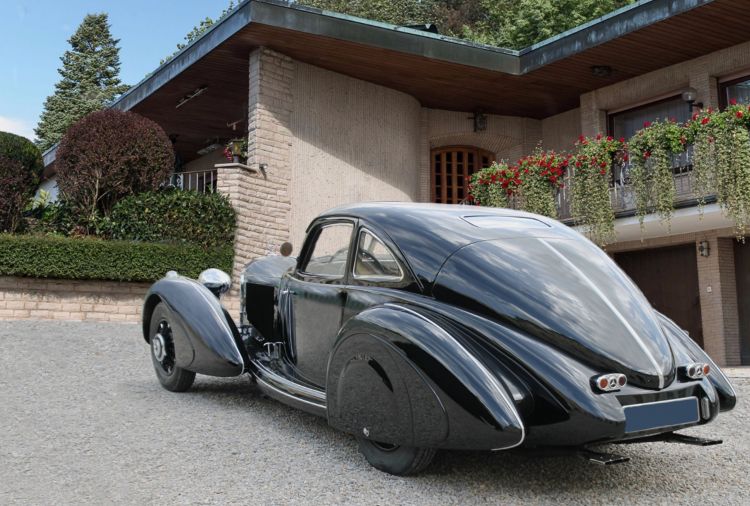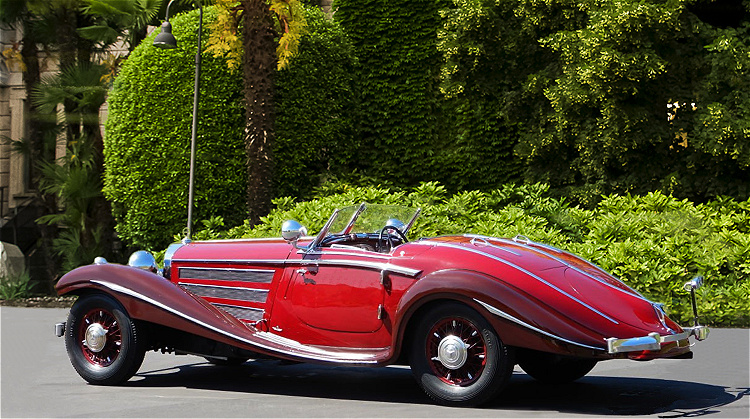Mercedes 770 W150 “Grosser”
Mercedes 770 W150: Development of the new “Grosser Mercedes” began around the end of 1936 in response to calls from industry and government leaders for a more modern premium car. But also management had already recognized that the existing model 770 W07 due to its conservative suspension with rigid axles front and rear, no longer met the company’s technical standards. By now the entire range of passenger and racing cars had been converted to designs with independent front and rear suspensions. After all Mercedes-Benz had been a major player in the field of advanced passenger car technology since 1931, when it introduced the 170 model.
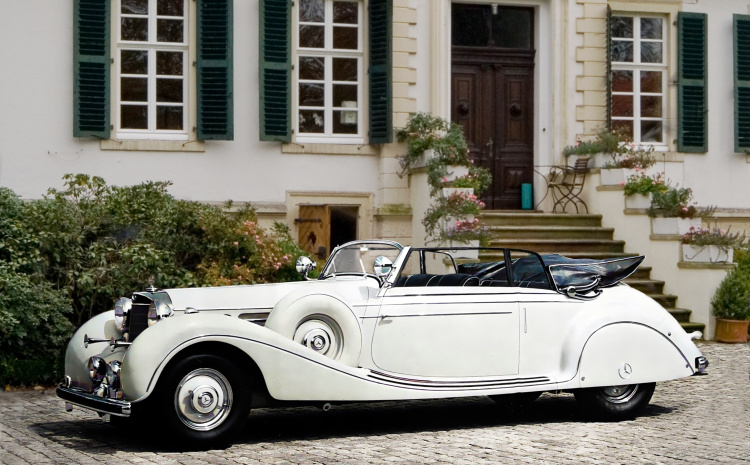
A 770 Cabriolet B from 1940, of which just one unit was produced
Finally, in February 1938, at the IAMA International Motor Show in Berlin, the evolutionary stage of the “Grosser”, known internally as the W150, was unveiled. The car, which continued to be called Mercedes 770 (without K!), manifested the art of automotive engineering to perfection.
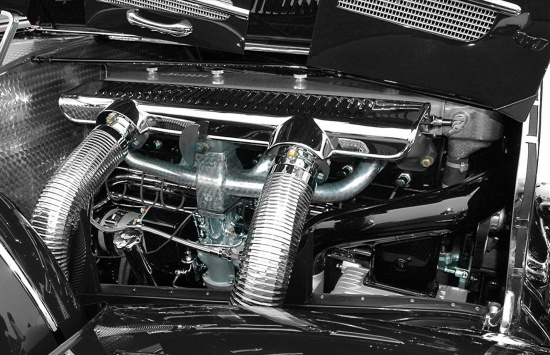
The engine of the Mercedes 770 W150 was updated
The engine remained unchanged in its dimensions, but underwent a number of modifications. The crankcase was now completely made of light alloy, the exhaust valves were sodium-cooled, the ignition control was automatic and the water pump was rigidly driven by the oil pump shaft.
The appearance of the engine had also seen upgrades. The cylinder block and ancillary housings were painted black, the brass pipes and fan were chrome-plated and all light alloy parts were polished to a hammered finish.

A 770 Pullman from 1939. This one is armor-plated, a total of 18 units were produced, which made it after the Open Tourer the second most produced version
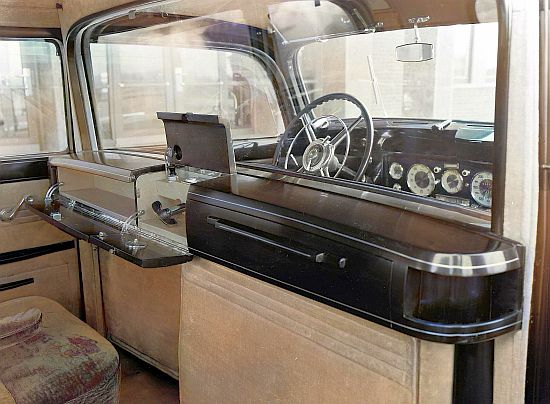
All Pullman cars came with a partition and as with all these cars, seating was most generous

With the Mercedes 770 W150 the supercharger was now standard and was made more efficient. In naturally aspirated mode the engine developed 155 hp, with the supercharger engaged this figure rose to 230 hp. This extra power was needed because the car had a curb weight of around 3,500 kg, depending on the body style. This increased to about 4,600 kg when the car was armored. The top speed was 170 km/h, which was reduced to only 80 km/h when armored.
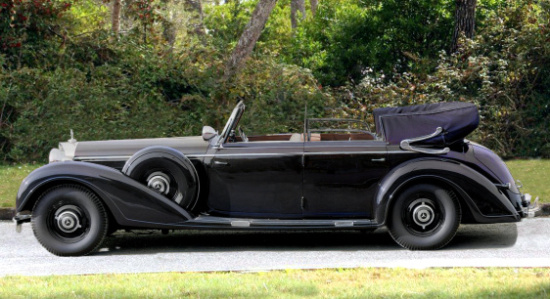
A Cabriolet D, of which just five were produced, and its interior
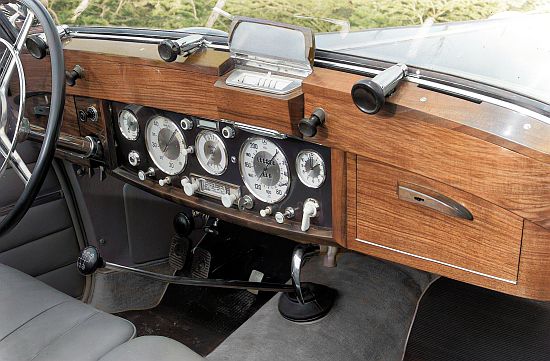

The frame and axles were completely new. The chassis side members, made of oval tube, were joined with six cylindrical cross members to form a torsion-resistant ladder-type frame. The individually coil-sprung front wheels were supported by A-frame arms arranged in a parallelogram. The rear axle was designed according to the De Dion principle, but Daimler-Benz called it the “laterally stable parallel-wheel axle”.
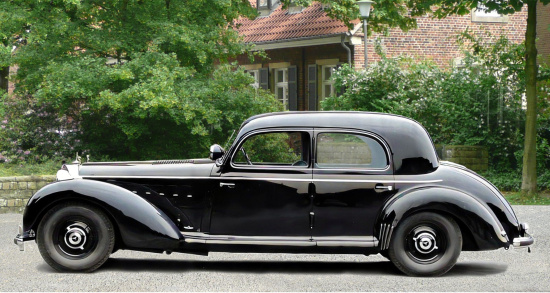
An armor-plated Sedan, of which ten were produced. In the next photo one can see the thick glass

Various body styles were again offered
The standard body styles offered for the Mercedes 770 W150 were:
- Pullman Sedan
- Open Tourer
- Cabriolet D and
- Cabriolet F
In addition, a single Cabriolet B was produced in 1940.
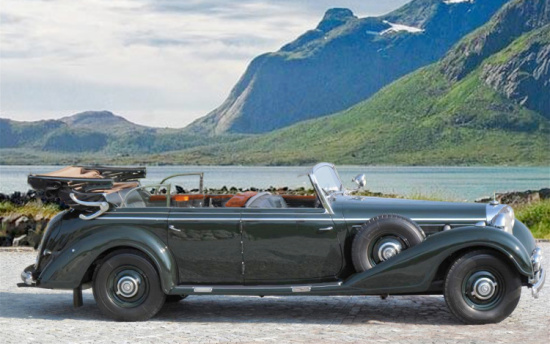
A non-armored Cabriolet F from 1939, of which just seven were produced in total
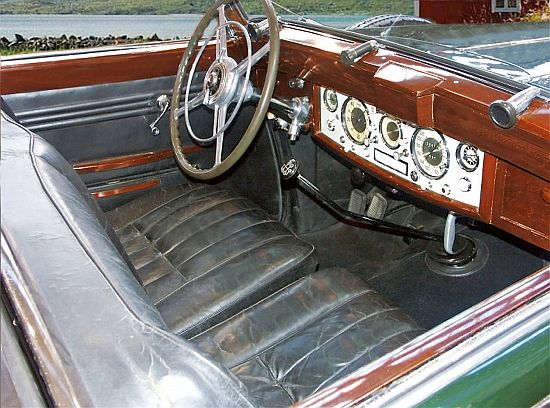
From 1938 to mid-1943 a total of 88 Mercedes 770 W150s left the Sindelfingen plant. Some of these cars remained in service until the late 1960s. A number of them can still be found in museums and private collections. Here is a more detailed overview of the models produced:
- Open Tourer: 46 (some of them armored)
- Pullman Sedan: 18 (around 8 of them armored)
- Sedan, four-doors: 10 (all of them armored)
- Cabriolet F: 7 (some of them armored)
- Cabriolet D: 5 (some of them armored)
- Cabriolet B: 1
- Chassis: 1

A non-armored Open Tourer from 1939 that was used by a French General after WWII
If you want to know more about the development and history of these fascinating cars, here is the link to my book about them. With over 240 pages, it covers next to the 770 models also the 460, 500 and 380 eight-cylinder models of the 1930s. Another chapter deals with the G4 all-terrain vehicles. Many new color photos, never published in a book before, show you interesting details of most of the cars.
The Link leads you the the US Amazon site. The title of the book is the same on Amazon in other markets.

